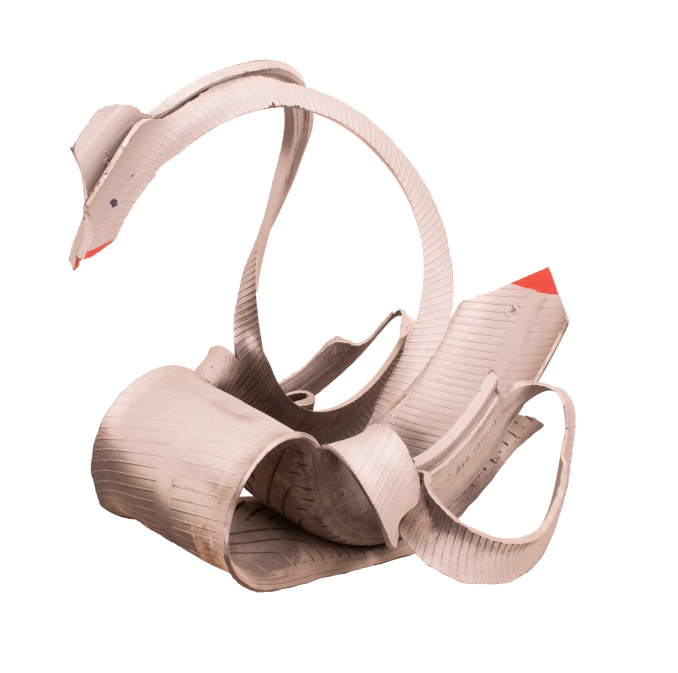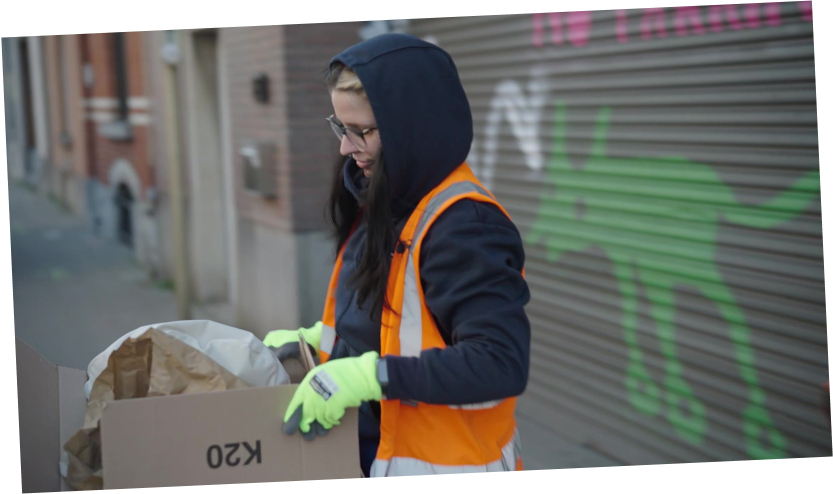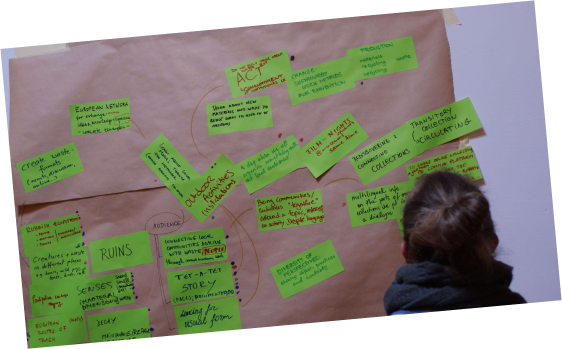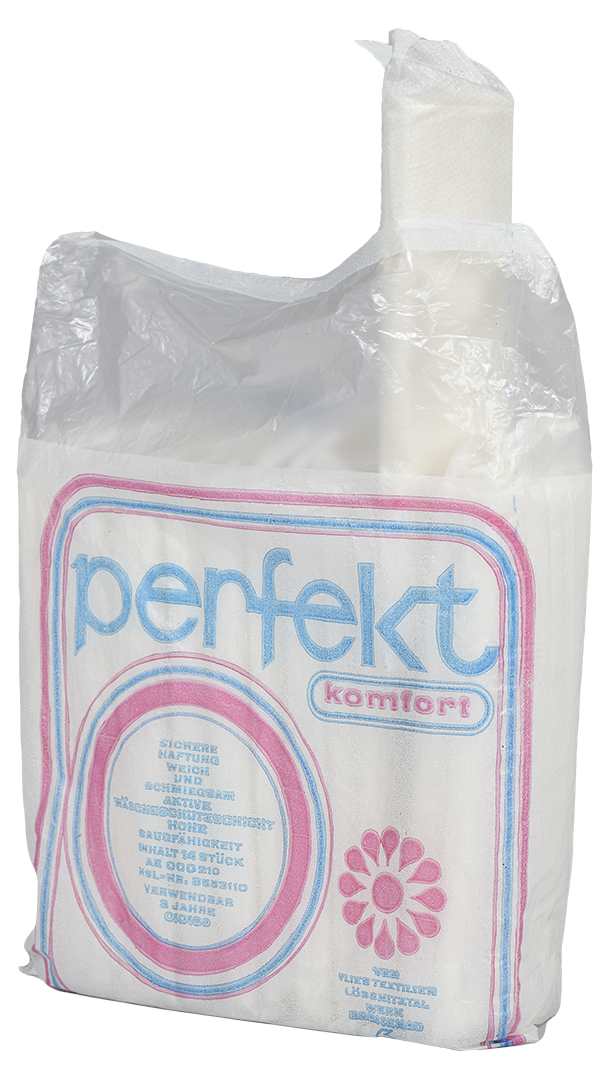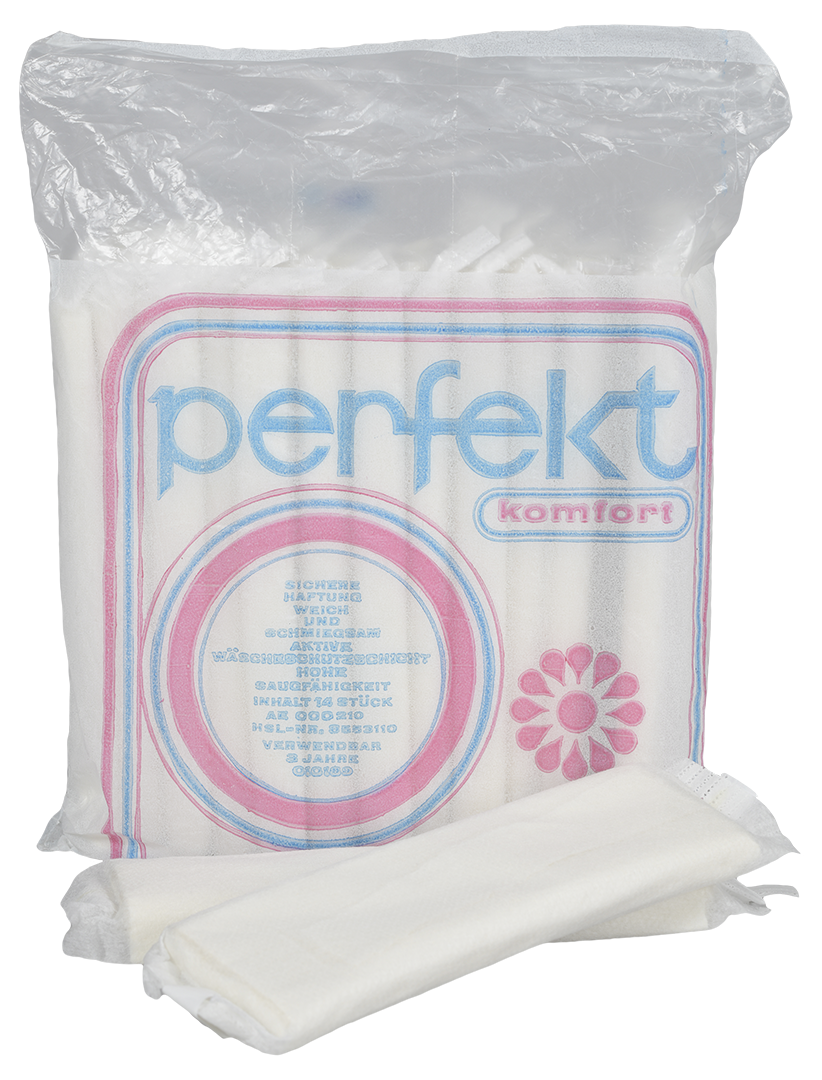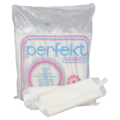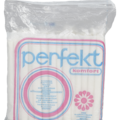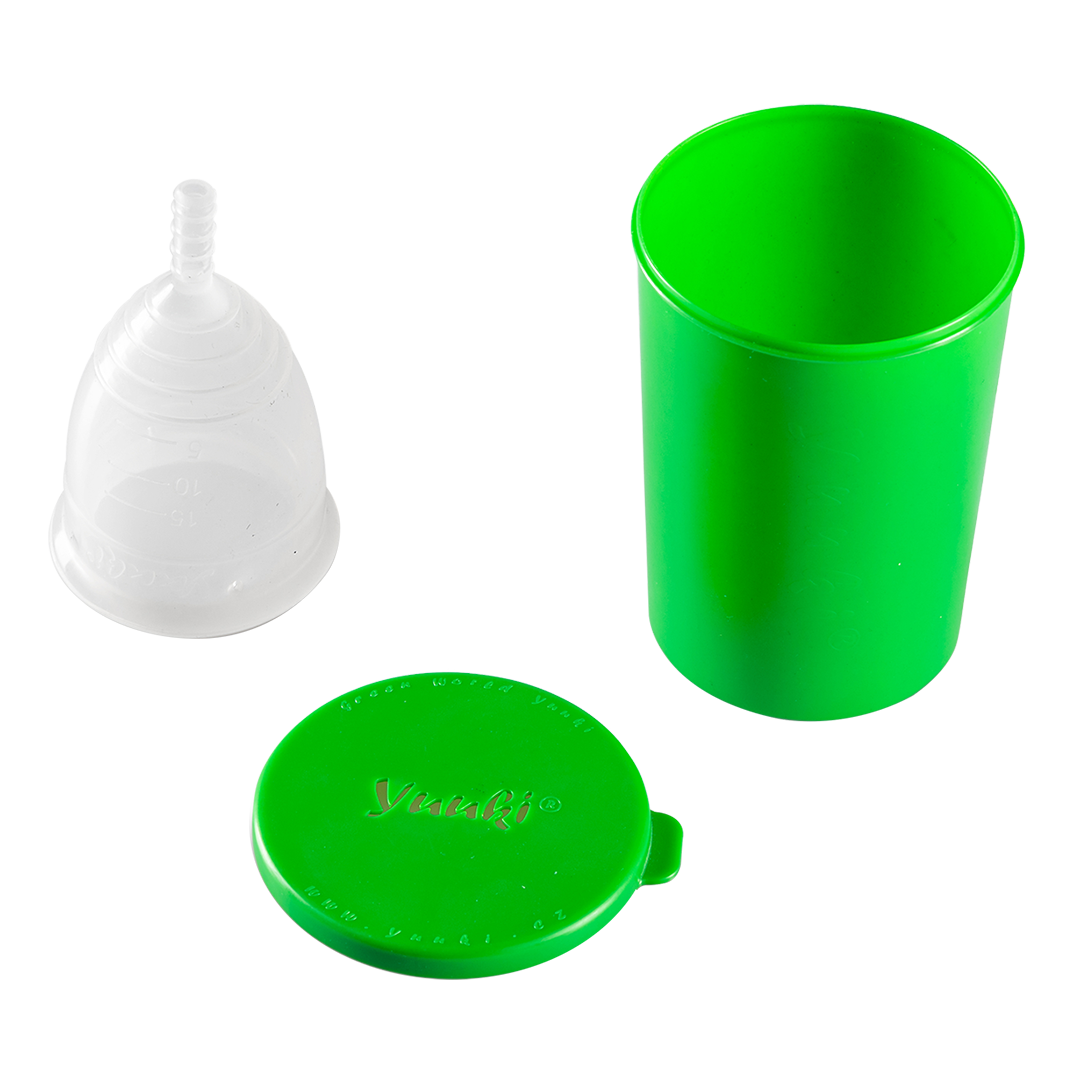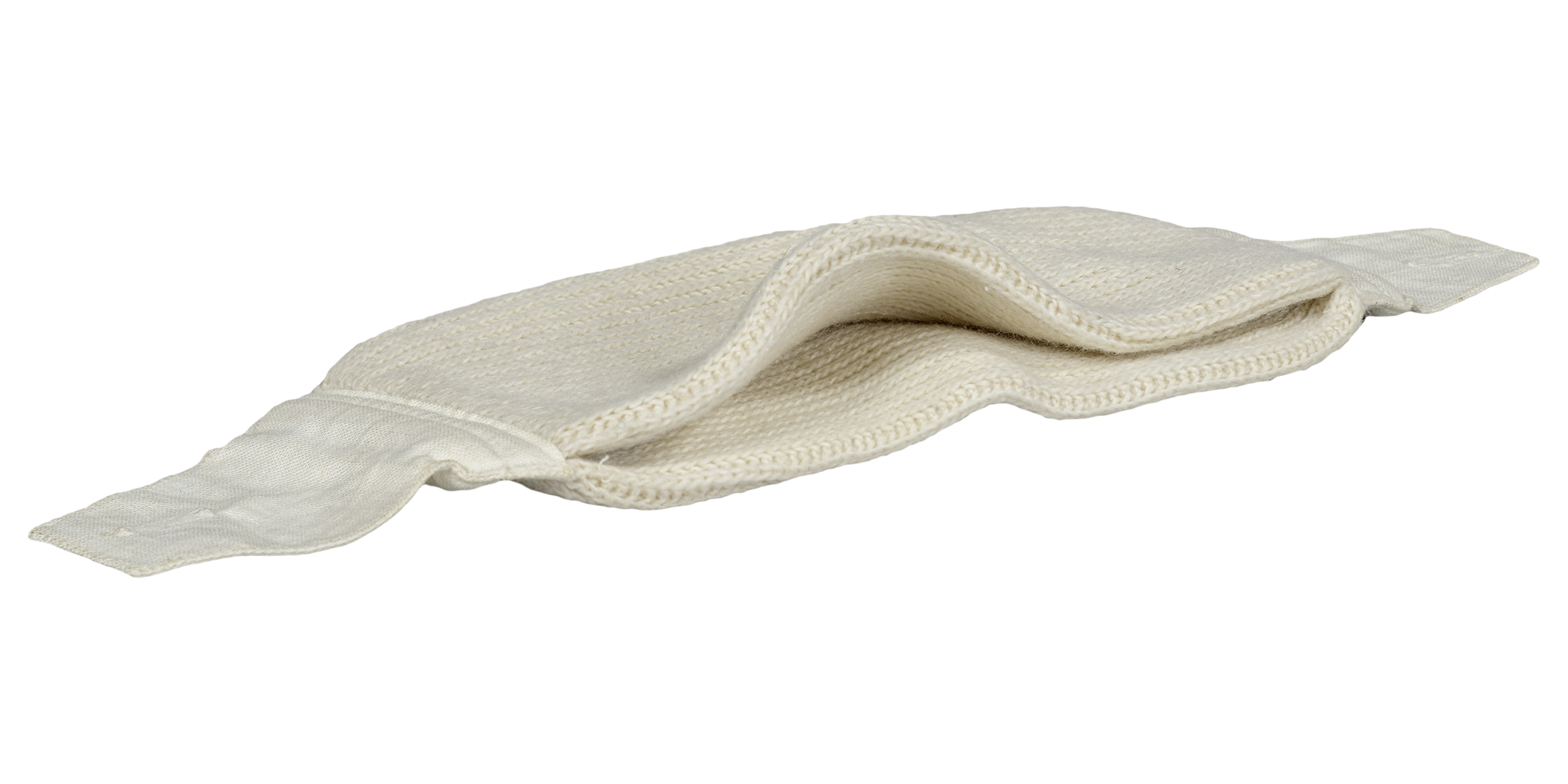Artist/Maker VEB Vliestextilien Lößnitztal
Date Production/Creation
1980-1990
Entry in the museum collection
2020
Place of origin
Lößnitztal, GDR, Europe
Current location
Museum of European Cultures, Berlin, Germany
Material
Cellulose, wadding, plastic
Dimension
30 x 22 x 7 cm (packaging); 22 x 7 x 1 cm (pad)
Inventory Number N (9D) 95/2020
Keyword Menstruation Packaging Single use
Copyright
Status In storage
Image Credit Staatliche Museen zu Berlin, Museum of European Cultures / Christian Krug Public Domain Mark 1.0
New versions of the menstrual pad arrived thick and fast throughout the twentieth century.
What is this object about, who are the people behind it?
This plastic pouch contains 14 menstrual pads from the brand "perfekt komfort". Made from white wadding and cellulose, they have an adhesive strip on the back. They were produced by VEB Vliestextilien Lößnitztal. Single-use pads superseded the previously common reusable knitted and fabric pads towards the middle of the 20th century. Early padded towels were still worn with a sanitary belt. Disposable pads that adhere to a person’s underwear via an adhesive strip did not appear until the 1970s.
What places is this object related to, how European/transnational is it?
Made by VEB Vliestextilien Lößnitztal from wadding and cellulose, these sanitary pads were produced and sold in GDR.
Why and how did this object arrive in the museum’s collection?
To prepare for this exhibition on menstruation, 2020 modern-day and historical sanitary products were added to the collection.
What is the relation of this object to waste?
Materials such as wood pulp, cotton, viscose fibres and plastic go into producing single-use pads. Sanitary products (including tampons) that can only be used once generate sanitary waste. This is neither recyclable nor reusable. Once used, these items end up in landfill or are incinerated.

